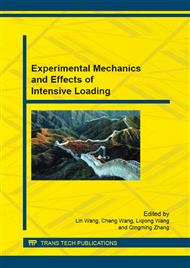[1]
M.L. Williams. Journal of Applied Mechanics , 1952, 19: 526-528.
Google Scholar
[2]
A. Seweryn,S. Poskrobko,Z. Mróz. Journal Engineering Mechanics ASCE, 1997, 123(6): 535-543.
Google Scholar
[3]
A. Seweryn . Engineering Fracture Mechanics, 1998, 59(6): 737-760.
Google Scholar
[4]
A. Seweryn , A. Lukaszewica. Engineering Fracture Mechanics, 2002, 69: 1487-1510.
Google Scholar
[5]
K.K. Jin, B.C. Sang. Journal of Mechanics Science and Technology, 2008, 22: 1269-1278.
Google Scholar
[6]
A. R. Torab. International Journal of Fracture, 2013 , 181: 285–292.
Google Scholar
[7]
F. J. Gomez, G. V. Guinea, M. Elices . International Journal of Fracture, 2006, 141: 95~109.
Google Scholar
[8]
M.R. Ayatollahi, A.R. Torab. Material and design, 2010, 31: 60-67.
Google Scholar
[9]
A. Seweryn, Engineering Fracture Mechanics, 1994, 47(5): 673-681.
Google Scholar
[10]
P. Lazzarin, R. Zambardi. International Journal of Fracture, 2001, 112: 275-298.
Google Scholar
[11]
Z. Yosibash, A. Bussiba, I. Gilad , et al. International Journal of Fracture, 2004, 125: 307-333.
Google Scholar
[12]
P. Lazzarin, F. Beto. International Journal of Fracture, 2005, 135: 161-185.
Google Scholar
[13]
F. J. Gomez, M. Elices, F. Beto. International Journal of Fracture, 2007, 145: 29-45.
Google Scholar
[14]
F. Beto, P. Lazzarin, F. J. Gomez, et al. International Journal of Fracture, 2007, 148: 415-433.
Google Scholar
[15]
M.R. Ayatollahi, F. Berto, P. Lazzarin. Carbon, 2010, 49 : 2465-2474.
Google Scholar
[16]
Berto F., Lazzarin P., Marangon C., Brittle fracture of U-notched graphite plates under mixed mode loading, Material and design, 41, 2012, pp.421-432.
DOI: 10.1016/j.matdes.2012.05.022
Google Scholar
[17]
F. J. Gomez, M. Elices, F. Beto. International Journal of Fracture, 2003, 123: 163~75.
Google Scholar
[18]
F. J. Gomez, M. Elices, F. Beto. International Journal of Fracture, 2004, 127: 239~264.
Google Scholar
[19]
Zhang J., Zhao YX., Resive for the theory of strain energy density factor, Journal of Baoji College of Arts and Science(Natural Science), 16, 1996, pp.70-74.
Google Scholar
[20]
X.M. Liu, Y. M Bian, Y.C. Liang. Chinese Quarterly of Mechanics, 2013, 34: 279-285.
Google Scholar
[21]
X.M. Liu, Y.H. Liu, Y.C. Liang., et al. Journal of Mechanical Strength, 2008, 30(2): 288~292.
Google Scholar
[22]
L. Susmel, D. Taylor. Engineering Fracture Mechanics, 2008, 75: 4401-4421.
Google Scholar


